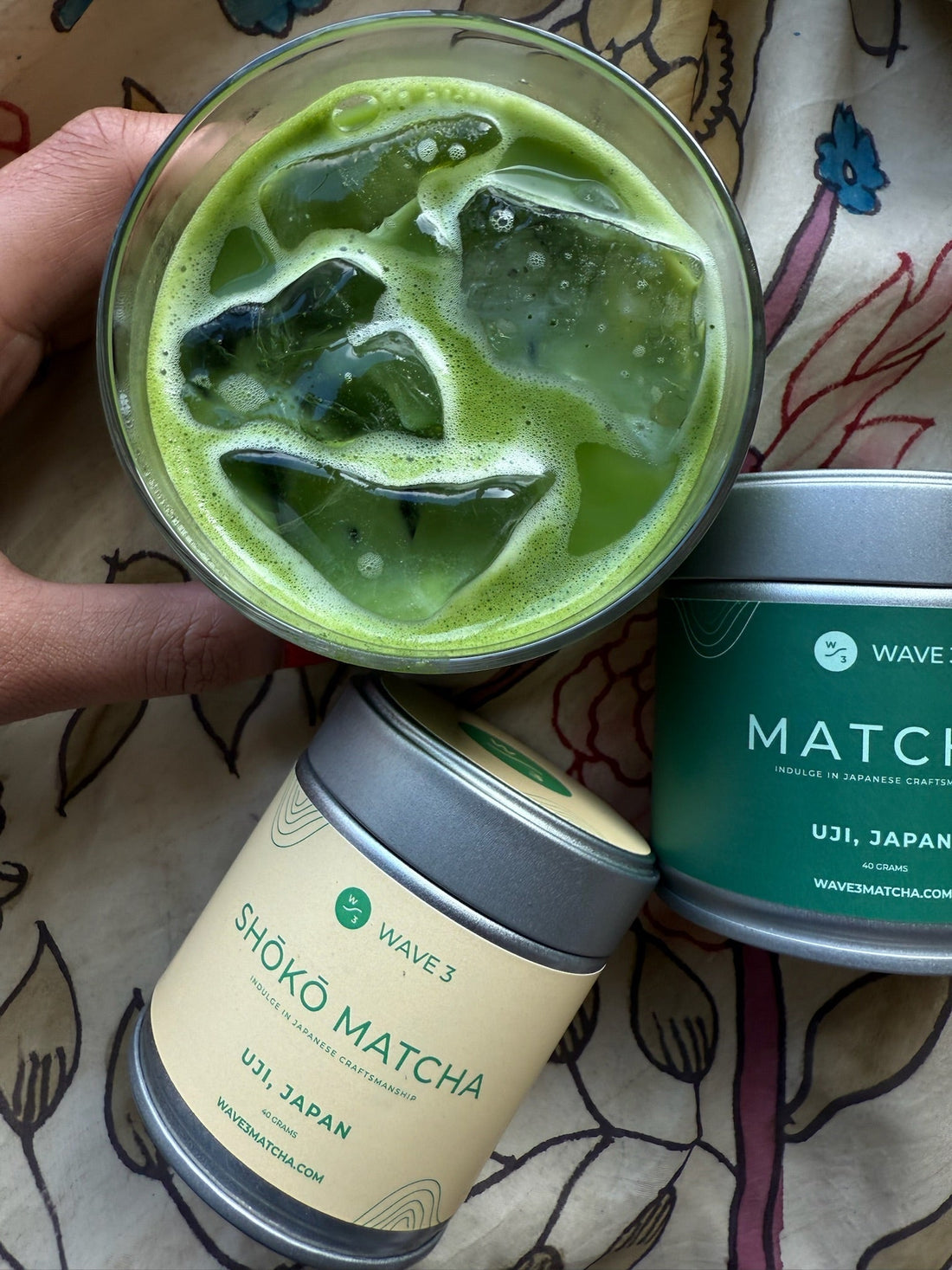
Navigating the Matcha Shortage: What You Need to Know
Share
Matcha isn’t just a trend. It’s a tradition, a ritual, and for us—a promise of quality, rarity, and care. But over the past year, something has shifted in the world of matcha: supply is tightening, demand is soaring, and consumers are feeling the impact.
Let’s walk through what’s happening—and how Wave 3 is continuing to bring you small-batch, farm-direct matcha, curated with intention.
What’s Causing the Global Matcha Shortage?
The finest matcha comes from Japan—and the most sought-after harvests are limited, delicate, and highly dependent on climate. In 2025, the region experienced:
- Unusually warm weather, resulting in lower tencha yields and shortened harvest windows.
- Fewer tea farmers, as aging producers retire and fewer younger generations take over
- Increased global demand, with more cafés, wellness brands, and consumers discovering the magic of matcha.
Together, these factors have led to a real scarcity in high-quality, ceremonial-grade matcha.
What This Means for You
If you’ve noticed your favorite cafés quietly removing matcha from menus, online stores running low or out of stock or prices creeping up across retailers...you’re not imagining it. The global supply of high-grade matcha has tightened.
But scarcity doesn’t mean you have to settle.
Why We’re Still Able to Offer Matcha, Curated for You
At Wave 3, we don’t chase volume. We’ve always been about sourcing rare, small-batch matcha from farms we know and trust in Uji and surrounding regions. We:
- Work with family-run producers who prioritize soil health, hand-picking, and slow stone-milling.
- Curate only the freshest, newest harvests—never stockpiled or blended.
- Taste-test and quality check every batch to ensure it meets the standards we believe our customers deserve.
When you drink Wave 3, you’re not just drinking matcha. You’re drinking something that was grown with care, chosen for you, and delivered at its peak.
Watch Out for Imitations
With demand soaring, we’re seeing more low-grade powders labeled as “ceremonial matcha.” Be cautious of:
- Muddled, brown-green color (a sign of oxidation or low tencha quality)
- Bitter or grassy flavors
- Unclear origin or vague farm sourcing
- Ultra-low prices that seem too good to be true
Real matcha is an investment. It’s not mass-produced, and it should never feel generic. We encourage you to ask: where is this from? Who made it? When was it harvested?
How to Enjoy Matcha During a Shortage
- Be intentional: Use your matcha mindfully. It’s a moment of pause and connection.
- Store it properly: Keep your matcha in a cool, dark space—ideally in the fridge—to preserve its freshness.
- Avoid hoarding: Matcha is best enjoyed fresh. Resist the urge to overbuy, and trust that the right matcha will find you.
Our Promise
Even in moments of scarcity, we remain committed to our values:
Small batch. Rare harvests. Curated for you.
Wave 3 isn’t about scale. It’s about intention. When you choose our matcha, you’re choosing something uncommon—something rooted in quality, tradition, and respect for every step of the journey.
This isn’t just any matcha. This is matcha for you.
